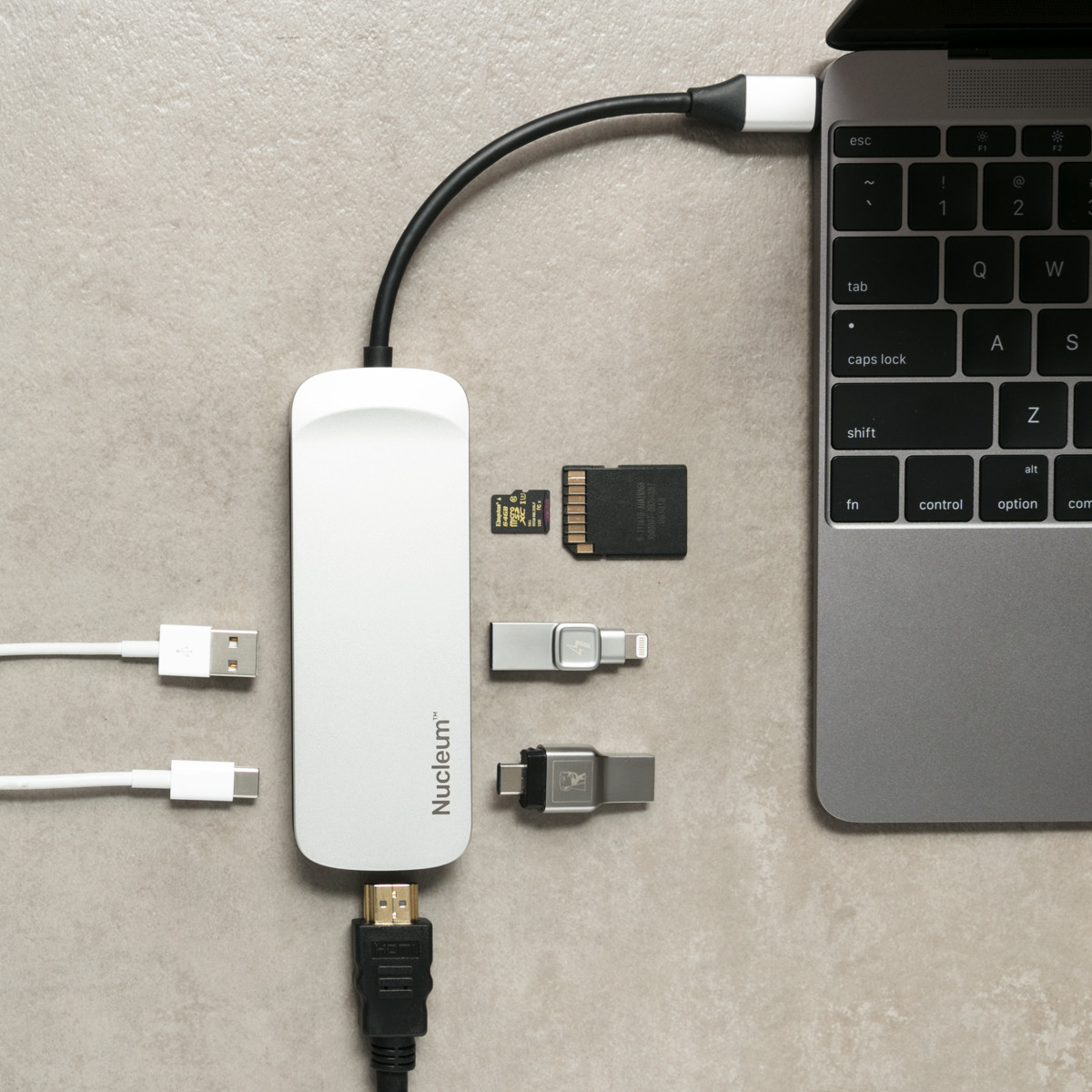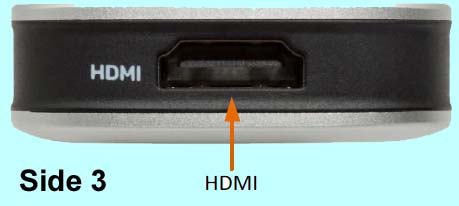Providing Classroom Resources on New & Emerging Technologies
TechnologyToday.us
A Hot Off the Press Product Review
Kingston’s Nucleum 7 Ports From 1 USB-C (MSRP $79.99)
Apple’s Deletion of Old Ports
With the newest models of MacBooks, Apple continues to tighten its grip on its users by doing away with the old ports that are needed for older accessories. To further frustrate people who are replacing their older model Mac with a MacBook, their old accessories now need adapters to plug into the USB-C port that has now replaced all the older ports found on the earlier models. To further add insult to injury unless you purchased a MacBook Pro, you might find that all your accessories have to share the same USB-C port one at a time.
The New USB-C Standard
USB-C is a new standard that has a plug that can be plugged in with either side facing up. That is the least significant feature of the new USB-C standard. A USB-C port could have a data transfer rate that is eight times faster than an older USB port and how fast it is depends on the specs of the computer. That said it is just as likely that the new USB-C port on your MacBook, that Apple is glorifying, only has the much slower USB 3 transfer rate. The technical specs of your MacBook will tell you the transfer rate of its USB-C port and it could be just 5 Gigabits per second. If you just purchased a new MacBook Pro, you have USB-C thunderbolt ports with the 40 Gigabits per second (Gbps) transfer rate.
The Best Port Replicator for Travel +
At CES 2018 Kingston introduced Nucleum which can give you the ability to run 7 devices from a one USB-C port on your MacBook. See photo 1. It is important to note that Nucleum will give you extra ports on any computer that has a USB-C port. However if it is used with a PC you will not be able to do video out from the Nucleum port. If your MacBook only has one USB-C port that is also used for charging, the Nucleum has a charging port that will charge your computer at the same time Nucleum’s other ports are running all your other accessories.
Let’s take a look at the Nucleum ports. You have two USB-C ports, two USB-A Ports, one Micro USB Port, one HDMI port that supports 4K output, and two ports for SD cards. You can actually run all of your accessories that are all plugged into these ports at the same time. Photos 2-4 show you the different side views of the Nucleum and what each port supports. Nucleum gives you lots of connectivity in a rather small light weight package so it is a perfect travel accessory. The USB ports on the Nucleum are USB 3.1. If your occupation demands USB-C (40 Gbps output) from your port extender, and your MacBook support 40 Gbps output, you should check out my
OWC Thunderbolt Review. (http://www.technologytoday.us/OWC-Thunderbolt_3_Review.html)




USB-A - USB 3.1 Gen 1 port allows you to plug in your keyboard, mouse, and USB drive to your MacBook or PC. The port will also charge your phone.
USB-C (Power) - plug in your MacBook power adapter to keep the battery charged while using the Nucleum and all of its ports (for power only).
USB-C (Data) - this port allows you to transfer your data, charge your phone, or use any of your USB-C accessories (video and USB Power Delivery (PD) is not supported through this port).
USB-A - USB 3.1 Gen 1 port allows you to plug in your keyboard, mouse, and USB drive to your MacBook or PC. The port will also charge your phone.
SD and microSD Slots - insert your SD or microSD card to the Nucleum to copy, move, or edit your pictures and documents.
HDMI - mirror or extend your screen by plugging your extra monitor to the HDMI port on your Nucleum. It allows you to stream 4K video.
Nucleum is a Port Replicator for Your Accessories
Copyright © 1996 - 2019 Dr. Alan J. Pierce
You are however, welcome to print material from this website for use in your classroom.






